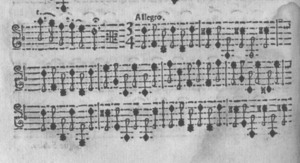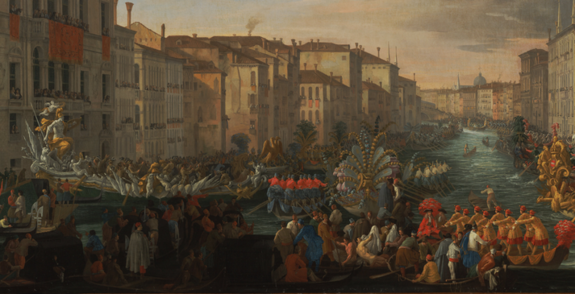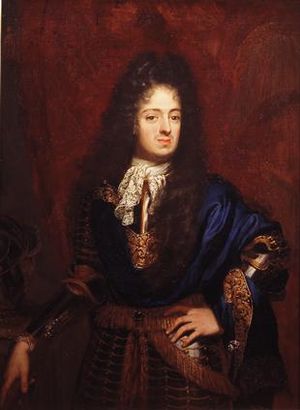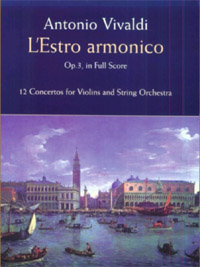MuseData: Antonio Vivaldi: Difference between revisions
| Line 154: | Line 154: | ||
Bb Major Concerto | Bb Major Concerto Op.4, No. 1 RV 383a | ||
Bb Major Concerto | |||
Bb Major Concerto | Bb Major Concerto Op.4, No. 1+ RV 383 | ||
Bb Major Concerto | |||
Bb Major Concerto Op.4, No. 1 RV 383a(a) | |||
Bb Major Concerto Op.4, No. 1 RV 383a(b) | |||
G Major Concerto | E Minor Concerto Op.4, No. 2 RV 279 | ||
G Major Concerto | |||
G Major Concerto Op.4, No. 3 RV 301 | |||
G Major Concerto Op.4, No. 3 RV 301(a) | |||
A Major Concerto | A Minor Concerto Op.4, No. 4 RV 357 | ||
A Major Concerto | |||
A Major Concerto Op.4, No. 5 RV 347 | |||
A Major Concerto Op.4, No. 5 RV 347(a) | |||
G Minor/1b Concerto Op.4, No. 6 RV 316a | |||
G Minor/2b Concerto Op.4, No. 6 RV 316 | |||
<concerto BWV 975> | |||
D Minor Concerto Op.4, No. 6 RV 316a(a) | |||
D Minor Concerto | |||
D Minor Concerto | C Major Concerto Op.4, No. 7 RV 185 | ||
D Minor Concerto Op.4, No. 8 RV 249 | |||
F Major Concerto Op.4, No. 9 RV 284 | |||
F Major Concerto RV 285 | |||
F Major Concerto Op7N1 RV 285a | F Major Concerto Op7N1 RV 285a | ||
C Minor/2b Concerto | |||
C Minor Concerto | C Minor/2b Concerto Op.4, No. 10 RV 196 | ||
C Minor Concerto Op.4, No. 10 RV 196(a) | |||
D Major Concerto | |||
D Major Op. | D Major Concerto Op.4, No. 11 RV 204 | ||
D Major Concerto Op.4, No. 11 RV 204(a) | |||
G Major Concerto | |||
F Major " | G Major Concerto Op.4, No. 12 RV 298 | ||
A Minor RV 357 | |||
F Major | F Major Concerto "Op.4, Np. 6" RV 291 | ||
A Minor Concerto RV 357 ?? | |||
F Major Concerto Op.4, No. 12/i RV 298(a) | |||
===Op. 5: VI Sonate/quatro à violino solo e basso e due a due violini e basso Continuo=== | ===Op. 5: VI Sonate/quatro à violino solo e basso e due a due violini e basso Continuo=== | ||
Revision as of 02:31, 15 November 2013
Sonatas and Concertos
Antonio Lucio Vivaldi (1678-1741) is best known to modern audiences for his instrumental music. Like most composers of his time, Vivaldi composed in the formal medium of the sonata in his earliest publications (from 1703). His reputation was propelled by his concertos, the earliest of which appeared in 1711. This is still the genre with which he is most widely associated.
Op. 1: Suonate da camera a trè, due violini e violone o cembalo
Vivaldi's twelve sonatas Op. 1 are presumed to have been published prior to his appointment as maestro di violino at the Ospedale della Pietà, Venice, because he is described without reference to the institution as "musico di violino, professore veneto" (a violinist and teacher in the Veneto). The works were dedicated to the count Annibale Gambara, one of five sons in a big family of noblemen from Brescia (the city in which Vivaldi's father was born), a provincial capital in the western Veneto. The Gambara also had a modest palace on the Grand Canal in the Venetian parish of San Barnabà.

These trio sonatas contained various numbers of movements (3 to 6), most in binary form. The four outer works (Nos. 1, 2, 11, and 12) were in minor keys, the others in major ones. The best known work is Op. 1, No. 12, which features an ambitious folìa movement at its conclusion. The earliest surviving print of Op. 1 was published in Venice (G. Sala) in 1705. The collection was reprinted in Amsterdam in 1723 (E. Roger, as print No. 363), in Paris in 1759 (Le Clerc), and in Austria in 1759. Many movements are brief and musically simple, so much so that were one to judge from this opus alone, one would not have anticipated the kind of success that Vivaldi later found.
G Minor Sonata Op 1, No. 1 RV 73
E Minor Sonata Op 1, No. 2 RV 67
C Major Sonata Op 1, No. 3 RV 61
E Major Sonata Op 1, No. 4 RV 66
F Major Sonata Op 1, No. 5 RV 69
D Major Sonata Op 1, No. 6 RV 62
Eb MajorSonata Op 1, No. 7 RV 65
D Major Sonata Op 1, No. 8 RV 64
A Major Sonata Op 1, No. 9 RV 75
Bb MajorSonata Op 1, No. 10 RV 78
B Minor Sonata Op 1, No. 11 RV 79
D Minor Sonata Op 1, No. 12 RV 63
Op. 2: Sonate a violino e basso per il cembalo

The trio sonata, over which Vivaldi had exhibited his command in Op. 1, had been the most prevalent instrumental genre of the 1690s, but in the first decade of the eighteenth century interest began to gravitate towards the "solo" sonata--a work in several movements one ensemble instrument and a basso continuo. In this 1709 collection by the Venetian publisher Antonio Bortoli Vivaldi pursued a more expressive vein of musical enticement. The opus was dedicated to the visiting young monarch Frederick IV of Denmark. As prince of Schleswig Holstein, his extended stay drew much artistic attention. No fewer that three operas were dedicated to him.
Seven of these sonatas were cast in minor keys. The movement structure remained variable. Vivaldi was moving in the direction of fewer movements but with greater musical elaboration within each movement. He was still described as musico di violino but also as maestro dei concerti (concert-master) of the Ospedale della Pietà.
G Minor Sonata Op. 2, No. 1 RV 27
A Major Sonata Op. 2, No. 2 RV 31
D Minor Sonata Op. 2, No. 3 RV 14
F Major Sonata Op. 2, No. 4 RV 20
B Minor Sonata Op. 2, No. 5 RV 36
C Major Sonata Op. 2, No. 6 RV 1
C Minor Sonata Op. 2, No. 7 RV 8
G Major Sonata Op. 2, No. 8 RV 23
E Minor Sonata Op. 2, No. 9 RV 16
F Minor Sonata Op. 2, No. 10 RV 21
D Major Sonata Op. 2, No. 11 RV 9
A Minor Sonata Op. 2, No. 12 RV 32
Like Op. 1, Op. 2 had a long after-life in both reprints and manuscript copies, mainly abroad. These included the publications of E. Roger (Amsterdam, 1712) and several editions (1721-1730) by I. Walsh J. Young (London).
Op. 3: L'Estro Armonico: Concerti

The first concertos by Vivaldi to reach print were those of Opus 3 (Amsterdam, 1711). With them Vivaldi suddenly became a celebrity, for although he was well known as a virtuoso, his previously published works had found a relatively modest reception. Vivaldi's titles remained as they were in Op. 2. Most composers described the contents of a publication in sufficient detail to indicate instrumentation, but Vivaldi settled for the word "Concerti" in order to allow space for the titles of his patron, the Grand Prince of Tuscany, Ferdinando III (1663-1713). The Grand Prince, who led a flamboyant life, enjoyed his visits to Venice, where however he contracted syphilis in 1696. This led to his premature death and changed the course of Tuscan (and imperial) history. Meanwhile, however, his patronage of music benefited many composers of the time including Tomaso Albinoni (1671-1751), George Frederick Handel (1685-1759), and Alessandro Scarlatti (1660-1725). His Bavarian wife, Violante Beatrice (1673-1731), was in many ways a still more significant supporter of individual singers and instrumentalists.
Having now completed eight years' of teaching at the Ospedale of the Pietà in Venice, Vivaldi shows himself to have experimented with a variety of approaches to textures and groupings of instruments. These twelve works are arranged cyclically, such that Nos. 1, 4, 7, and 10 are scored for four violins and string orchestra; Nos. 2, 5, 8, and 11 for two violins, violoncello, and string orchestra; and Nos. 3, 6, 9, and 12 for solo violin (Violino Principale) and string orchestra. Within the concertino groups (four violins or, alternatively, two violins and violoncello), there is further separation. The "four violins" model often involves the pairing of the instruments such that one duo imitates another. This kind of experimentation is suggested by the word estro, which refers to gestational properties whereby one musical passage generates the need for the next. In musical terms, the sophistication of the idea represented an enormous step forward for Vivaldi, whose first sonatas were primitive and somewhat generic by comparison.
Additionally, the music was more cogent than before, the organization manifestly rational. The imaginative scoring, careful markup, and newly pungent musical affects were novelties not found in Opp. 1 or 2. If he had leaned on the familiar models of Arcangelo Corelli (1753-1713) before, Vivaldi was now producing music that was novel, ambitious, and aesthetically pleasing. Largely in coincidence with this publication, Vivaldi's concerts at the Pietà began to win plaudits from a succession of visiting dignitaries from abroad.
Within the context of the early concerto, Op. 3 was equally noteworthy. The now elderly Corelli had perfected the concerto grosso [his Op. 6 would be published only posthumously in 1714]. Vivaldi's concertos for two and four violins had some debts to these works, but his concertos for solo violin and orchestra did not have Corellian models to follow. The trumpet concertos by Giuseppe Torelli (1658-1709) are an oft mentioned alternative model, but Vivaldi's skills at articulation and exhibitionism were unrivaled. The violin was capable of much greater subtlety than the trumpet.
Dissemination of Individual Works from Op. 3
The Concerti Op. 3 were so popular that the entire opus was reprinted in Amsterdam within a year. Many reprints followed in both London and Paris through 1751. Because of the cyclical rotation of different combinations of instruments from work to work individual pieces in Op. 3 led themselves to diverse uses. The basic organization is shown in the table.
D Major Op. 3, No. 1 RV 549 (4 violins)
G Minor Op. 3, No. 2 RV 578 (2 violins, violoncello)
G Major Op. 3, No. 3 RV 310 (principal violin)
E Minor Op. 3, No. 4 RV 550 (4 violins)
A Major Op. 3, No. 5 RV 519 (2 violins, violoncello)*
A Minor Op. 3, No. 6 RV 356 (principal violin)
F Major Op. 3, No. 7 RV 567 (4 violins)*
A Minor Op. 3, No. 8 RV 522 (two violins, violoncello)
D Major Op. 3, No. 9 RV 230 (principal violin)*
B Minor Op. 3, No. 10 RV 580 (4 violins)
D Minor Op. 3, No. 11 RV 565 (2 violins, violoncello)
E Major Op. 3, No. 12 RV 265 (principal violin)*
Several works from Opus 3 took on lives of their own. Six were transcribed by J. S. Bach, and there are faint clues that Bach may have transcribed them all. The concertos for two violins and cello were transcribed for organ.
G Minor Op. 3, No. 2 RV 578 (2 violins, violoncello)
A Major Op. 3, No. 5 RV 519 (2 violins, violoncello)*
A Minor Op. 3, No. 8 RV 522 (two violins, violoncello)
D Minor Op. 3, No. 11 RV 565 (2 violins, violoncello)
Those for solo violin were used as the basis for harpsichord concertos.
G Major Op. 3, No. 3 RV 310 (principal violin)
A Minor Op. 3, No. 6 RV 356 (principal violin)
D Major Op. 3, No. 9 RV 230 (principal violin)*
E Major Op. 3, No. 12 RV 265 (principal violin)*
Only one of the works for four violins was recomposed--as a concerto for four harpsichords.
Apart from Bach's transcriptions, there was wide circulation of the music. Much of it was stimulated by John Walsh's edition of c. 1715, in which the order of Nos. 6-9 was altered such that these concertos became Nos. 8, 9, 6, and 7). The titles with as asterisk (*) above were transcribed for clavichord in a manuscript (Manchester UK) now known as Anne Dawson's Book. Numerous other transcriptions survive in Europe and North America.
CCARH Scores and Parts for Opus 3

CCARH cooperated with Dover Publications Inc. in producing the scores that appear in L'estro armonico: Twelve Concertos for Violins and String Orchestra, Op. 3. The cover is shown here.
-
Vivaldi, Antonio. "L'Estro armonico", Op. 3 in Full Score: 12 Concertos
for Violins and String Orchestra, Ed. by Eleanor Selfridge-Field (Mineola, New York: Dover Publications; 1999). ISBN 0-486-40631-8 (Amazon link).
ISBN 0-486-40631-8 {Dover link).
Op. 4: La Stravaganza: Concerti
Vivaldi's violin concertos Op. 4 (announced in London on January 1, 1715) achieved a much broader penetration of the European market than any previous publication of his music. The collection, published in Amsterdam as Roger's prints No.s 399 and 400, bore the title La stravaganza (an extravaganza). Certain works by other composers shared this subtitle, though not necessarily the style of Vivaldi's works. In other instances "extravagance" could refer to chromatic harmonies, but in Vivaldi's case it referred to the challenges the works posed for the principal violinist. The collection was dedicated to a Venetian nobleman, Vettor Delfin. With only one exception (Op. 4, No. 7), the concertos were of three movements.
For two years he had been filling holes left by the departure of Francesco Gasparini at the Pietà, and so he had taken up the composition of motets and oratorios. The instrumental works offered here thus had passed through a filter that had not existed when Op. 3 went to press. Reprints of Op. 4 appeared in 1723, 1728, and 1730, but individual works were liberated from the collection in various manuscript transmissions. Vivaldi had now reached the point where demand for his music exceeded the amount of time he could afford to devote to such genres. Op. 7, No. 1, for example, was a first cousin of Op. 4, No. 9. Myriad other variants of this set of works were quoted in later works.
Bb Major Concerto Op.4, No. 1 RV 383a
Bb Major Concerto Op.4, No. 1+ RV 383
Bb Major Concerto Op.4, No. 1 RV 383a(a)
Bb Major Concerto Op.4, No. 1 RV 383a(b)
E Minor Concerto Op.4, No. 2 RV 279
G Major Concerto Op.4, No. 3 RV 301
G Major Concerto Op.4, No. 3 RV 301(a)
A Minor Concerto Op.4, No. 4 RV 357
A Major Concerto Op.4, No. 5 RV 347
A Major Concerto Op.4, No. 5 RV 347(a)
G Minor/1b Concerto Op.4, No. 6 RV 316a
G Minor/2b Concerto Op.4, No. 6 RV 316
<concerto BWV 975>
D Minor Concerto Op.4, No. 6 RV 316a(a)
C Major Concerto Op.4, No. 7 RV 185
D Minor Concerto Op.4, No. 8 RV 249
F Major Concerto Op.4, No. 9 RV 284
F Major Concerto RV 285
F Major Concerto Op7N1 RV 285a
C Minor/2b Concerto Op.4, No. 10 RV 196
C Minor Concerto Op.4, No. 10 RV 196(a)
D Major Concerto Op.4, No. 11 RV 204
D Major Concerto Op.4, No. 11 RV 204(a)
G Major Concerto Op.4, No. 12 RV 298
F Major Concerto "Op.4, Np. 6" RV 291
A Minor Concerto RV 357 ??
F Major Concerto Op.4, No. 12/i RV 298(a)
Op. 5: VI Sonate/quatro à violino solo e basso e due a due violini e basso Continuo
The six works of Op. 5 were offered as a continuation of Op. 2.
Op. 6: VI Concerti à Cinque Str., 3 violini, alto viola, e basso continuo
Op. 7: Concerti a 5 strumenti: Tre Violini, Alto Viola e Basso Continuo
Op. 8: Il cimento dell'armonia e dell'invenzione
CCARH Parts for Op. 8
The following parts for Antonio Vivaldi's Op.8 concerti accompany the full score available from Dover Publications:
- Vivaldi, Antonio. "The Four Seasons" and Other Violin Concertos in Full Score; Opus 8, Complete. Ed. by Eleanor Selfridge-Field. Mineola, New York: Dover Publications; 1995. ISBN 0-486-28638-X.
| Opus, Work No. | Ryom No. | Genre / Instrumentation | Key | Nickname; Related works | Score | Parts |
|---|---|---|---|---|---|---|
| Op. 8, No. 1 | RV 269 | Concerto / VPr; V1 V2 Va Vc Org | E Major | "La Primavera" ("Spring") | score | |
| Op. 8, No. 2 | RV 315 | Concerto / VPr; V1 V2 Va Vc Org | G Minor | "L'Estate" ("Summer") | score | |
| Op. 8, No. 3 | RV 293 | Concerto / VPr; V1 V2 Va Vc Org | F Major | "L'Autunno" ("Autumn") | score | |
| Op. 8, No. 4 | RV 297 | Concerto / VPr; V1 V2 Va Vc Org | F Minor | "L'Inverno" ("Winter") | score | |
| Op. 8, No. 5 | RV 253 | Concerto / VPr; V1 V2 Va Vc Org | in E♭ Major | "La Tempesta di Mare" ("The Storm at Sea") | score | |
| Op. 8, No. 6 | RV 180 | Concerto / VPr; V1 V2 Va Vc Org | C Major | "Il Piacere" ("Pleasure") | score | |
| Op. 8, No. 7 | RV 242 | Concerto / VPr; V1 V2 Va Vc Org | D Minor | RV 242a | score | |
| Op. 8, No. 8 | RV 332 | Concerto / VPr; V1 V2 Va Vc Org | G Minor | score | ||
| Op. 8, No. 9 | RV 236 | Concerto / VPr; V1 V2 Va Vc Org | D Minor | RV 454 | score | |
| Op. 8, No. 10 | RV 362 | Concerto / VPr; V1 V2 Va Vc Org | B♭ Major | "La Caccia" ("The Hunt") | score | |
| Op. 8, No. 11 | RV 210 | Concerto / VPr; V1 V2 Va Vc Org | D Major | RV 210a, B. Marcello Op. 1, No. 8 | score | |
| Op. 8, No. 12 | RV 178 | Concerto / VPr; V1 V2 Va Vc Org | C Major | score |
Op. 9: La Cetra. Concerti
Op. 10: VI Concerti a Flauto Traverso
Six Concertos for Flute and String Orchestra, Op. 10; Related Variants
As published, Vivaldi's Opus 10 is a straightforward collection of concertos for flute and string orchestra. Most works which originally called for obbligato flutes seem to have originated during the early 1720s, perhaps reflecting opportunities that Vivaldi encountered in Rome, where he stayed intermittently between c. 1719 and 1724. Although the transverse flute was then little known in Italy, the availability of an excellent player is was essential for the execution of several of his works for it.
Opus 10 appear in 1729, in rough coincidence with Vivaldi's violin concertos Opp. 11 and 12. All three volumes were published in Amsterdam. Although published set was designed for a market oriented towards some kind of standardized, relatively neutral instrumentation, the origins of the individual works were heterogeneous. The indications suggested by the related concertos show on the lower half of the chart below do not include subtle differences of instrumental alternatives and/or pairings--for example, an independent oboe part vs. an oboe part duplicating a second violin, a separate cello part vs. an unspecified Basso, and so forth. One manuscript source for No. 3 is scored for recorder rather than violin.
The transverse flute and the recorder were both associated with a certain freedom of timbral composition. The so-called chamber concertos (RV 570, 90, and 101) for flute (or recorder), oboe, bassoon, violin, and bass can be understood to signify this sense of free play, rather than a subgenre cast in concrete. Although Vivaldi's chamber concertos had few analogues during Vivaldi's lifetime, they paved the way to a rich chamber repertory in the later eighteenth century.
| Opus, Work No. | Ryom No. | Genre / Instrumentation | Key | Nickname | Parts |
|---|---|---|---|---|---|
| Op. 10, No. 1 | RV 433 | Concerto / Flute; V1 V2 Va Vc BC | F Major | "The Sea Tempest" | parts |
| Op. 10, No. 2 | RV 439 | Concerto / Flute; V1 V2 Va Vc BC | G Minor | "Night" | parts |
| Op. 10, No. 3 | RV 428 | Concerto / Flute; V1 V2 Va Vc BC | D Major | "The Goldfinch" | parts |
| Op. 10, No. 4 | RV 435 | Concerto / Flute; V1 V2 Va Vc BC | G Major | parts | |
| Op. 10, No. 5 | RV 434 | Concerto / Flute; V1 V2 Va Vc BC | F Major | parts | |
| Op. 10, No. 6 | RV 437 | Concerto / Flute; V1 V2 Va Vc BC | G Major | parts | |
| Related concertos | |||||
| Unpublished | RV 444 | Concerto / Sopranino Recorder; V1 V2 Va Vc Bn | C Major | parts | |
| Op. 10, No. 1 (alt.) | RV 570 | Concerto / Flute, Oboe, Bassoon; VPr V1 V2 Va BC | F Major | parts | |
| Op. 10, No. 2 (alt.) | RV 501 | Concerto / Bassoon; V1 V2 Va BC | B♭ Major | parts | |
| Op. 10, No. 3 (alt.) | RV 90 | Concerto / Flute, Oboe, Violin and Bassoon | D Major | parts | |
| Op. 10, No. 5 (alt.) | RV 442 | Concerto / Recorder; V1 V2 Va BC | F Major | parts | |
| Op. 10, No. 6 (alt.) | RV 101 | Concerto / Flute, Oboe, Violin, Bassoon, BC | G Major | parts | |
The first three works are the best known ones of the collection. Their programmatic allusions are largely confirmed in associated manuscripts. Storms at sea and phantoms of the night (the images cultivated by the first two) were staples of opera staging at Venice's Teatro Sant'Angelo, the Venetian theater with which Vivaldi and his father were most consistently associated. Both played a prominent role in Venetian scene paintings contemporary with Vivaldi.
The representation of sleep in the fourth movement of Op 10, No. 2, is illustrative of a fascination with dreams and the supernatural that was probed cautiously on the stage because of the pervasive scrutiny of religious censors. However, the dramatization of darkness fed Sant'Angelo's penchant for grottoes and grotesque scenes. It is darkness that the bassoon invokes in the manuscript RV 501 (the loose analogue of No. 2), where the the key is Bb Major rather than G Minor.
Vivaldi's depictions of bird-calls (in Op. 10, No. 3 a bullfinch) were prevalent not only in his concertos but also in his operas, and in dozens of works by other composers of the time. Also elsewhere they often suggested the formal gardens that were so much promoted by the aristocracy, in Vivaldi's case they are more often a natural depiction of bucolic habitats consistent with the imagery of Arcadian shepherds than of programmed landscapes abroad.
The sopranino recorder concerto RV 444 is a unique work among Vivaldi's oeuvre, although it could easily have been adapted to a different soloist. It would have suited a virtuoso of considerable renown.
The parts provided here correspond to the Dover Publication entitled Six Concertos for Flute and String Orchestra, Op. 10, and Related Variants.